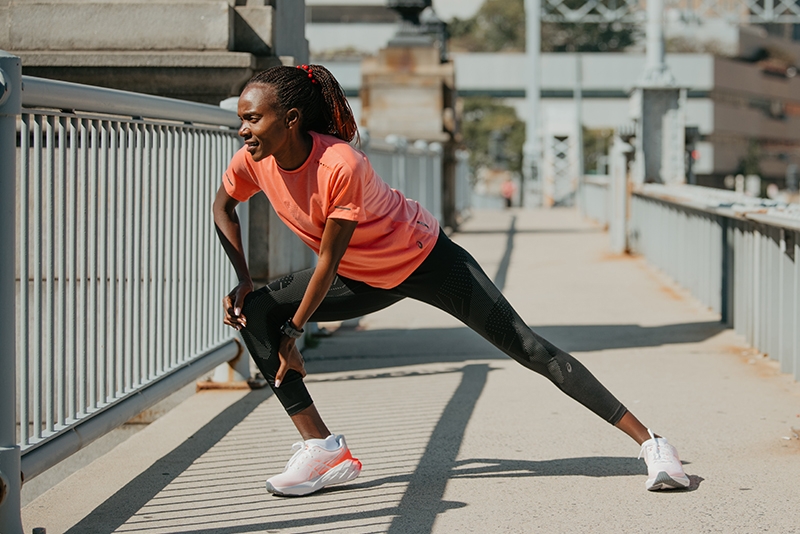Optimize Your Running Workout: Professional Strategies Unveiled
Optimize Your Running Workout: Professional Strategies Unveiled
Blog Article
Managing Common Running Pains: Causes, Solutions, and Prevention
As runners, we typically come across different pains that can hinder our efficiency and satisfaction of this physical activity. By discovering the root reasons for these operating discomforts, we can reveal targeted remedies and preventive measures to guarantee a smoother and much more satisfying running experience.
Typical Running Pain: Shin Splints
Shin splints, a typical running pain, typically result from overuse or improper footwear throughout exercise. This problem, clinically understood as medial tibial tension syndrome, manifests as discomfort along the internal side of the shinbone (tibia) and is prevalent among professional athletes and joggers. The repeated tension on the shinbone and the tissues affixing the muscular tissues to the bone causes swelling and pain. Joggers that quickly enhance the intensity or period of their workouts, or those who have flat feet or improper running strategies, are especially vulnerable to shin splints.
To stop shin splints, individuals ought to progressively increase the intensity of their exercises, wear suitable shoes with correct arch assistance, and maintain adaptability and toughness in the muscles surrounding the shin. If shin splints do take place, preliminary treatment includes remainder, ice, compression, and elevation (RICE) Furthermore, incorporating low-impact tasks like swimming or cycling can help preserve cardio health and fitness while allowing the shins to recover. Persistent or severe situations might call for clinical evaluation and physical therapy for efficient administration.
Usual Running Discomfort: IT Band Disorder
Along with shin splints, one more common running pain that athletes typically experience is IT Band Syndrome, a condition brought on by swelling of the iliotibial band that leaves the outer upper leg and knee. IT Band Disorder usually materializes as pain outside of the knee, especially during tasks like running or biking. The iliotibial band is a thick band of fascia that links the hip to the shin, and when it becomes irritated or tight, it can rub against the thigh bone, leading to pain and discomfort.
Joggers experiencing IT Band Disorder may observe a stinging or aching experience on the outer knee, which can aggravate with continued activity. Aspects such as overuse, muscle discrepancies, inappropriate running form, or insufficient workout can contribute to the advancement of this problem.
Common Running Pain: Plantar Fasciitis

Plantar Fasciitis can be credited to numerous factors such as overtraining, improper footwear, running on difficult surfaces, or having high arches or flat feet. To stop and ease Plantar Fasciitis, joggers can include extending workouts for the calf bones and plantar fascia, put on encouraging shoes, keep a healthy and balanced weight to lower pressure on the feet, and progressively boost running strength to prevent unexpected anxiety on the plantar fascia. If signs continue, it is suggested to seek advice from a health care expert for proper diagnosis and therapy alternatives to resolve the problem successfully.
Usual Running Discomfort: Jogger's Knee
After addressing the difficulties of Plantar Fasciitis, another common problem that joggers usually deal with is Runner's Knee, a common running pain that can hinder sports efficiency and cause discomfort throughout physical task. Runner's Knee, likewise called patellofemoral discomfort syndrome, manifests as discomfort around or behind the kneecap. This condition is frequently credited to overuse, muscular tissue discrepancies, improper running techniques, or troubles with the positioning of the kneecap. Joggers experiencing this discomfort may feel a plain, aching discomfort while running, increasing or down stairs, or after long term periods of resting. To stop Runner's Knee, it is critical to integrate proper workout and cool-down routines, preserve strong and well balanced leg muscles, use appropriate shoes, and gradually boost running intensity. If signs and symptoms persist, looking for guidance from a medical care professional or a sporting activities medicine expert is advised to identify the underlying reason and develop a customized therapy plan to ease the pain and stop more problems.
Usual Running Pain: Achilles Tendonitis
Typically afflicting joggers, Achilles Tendonitis is an excruciating condition that affects the Achilles tendon, triggering discomfort and prospective constraints in physical task. The Achilles ligament is a thick band of cells that connects the calf muscles to the visit here heel bone, essential for activities like running, jumping, and walking - great tips. Achilles Tendonitis commonly creates due to overuse, improper footwear, inadequate extending, or abrupt rises in physical activity
Symptoms of Achilles Tendonitis include pain and tightness along the ligament, specifically in the early morning or after durations of lack of exercise, swelling that worsens with activity, and possibly bone spurs in chronic cases. To stop Achilles Tendonitis, it is vital to extend effectively in the past and after running, put on appropriate shoes with correct assistance, slowly boost the intensity of exercise, and cross-train to minimize repeated tension on the tendon. Treatment might involve rest, ice, compression, elevation (RICE method), physical treatment, orthotics, and in extreme situations, surgical procedure. Early intervention and correct treatment are vital for handling Achilles Tendonitis successfully and stopping long-lasting problems.
Conclusion

Report this page